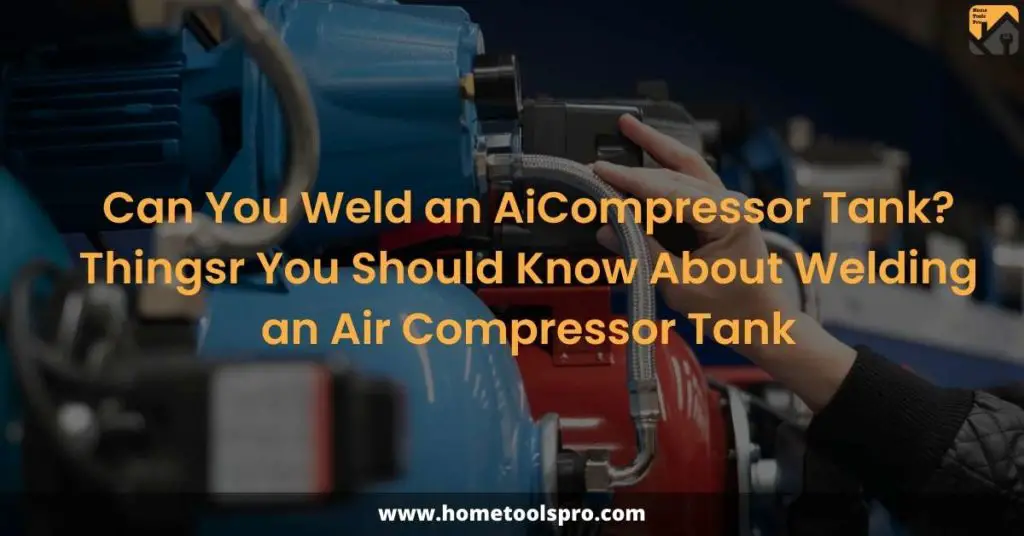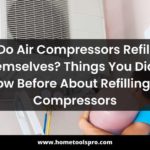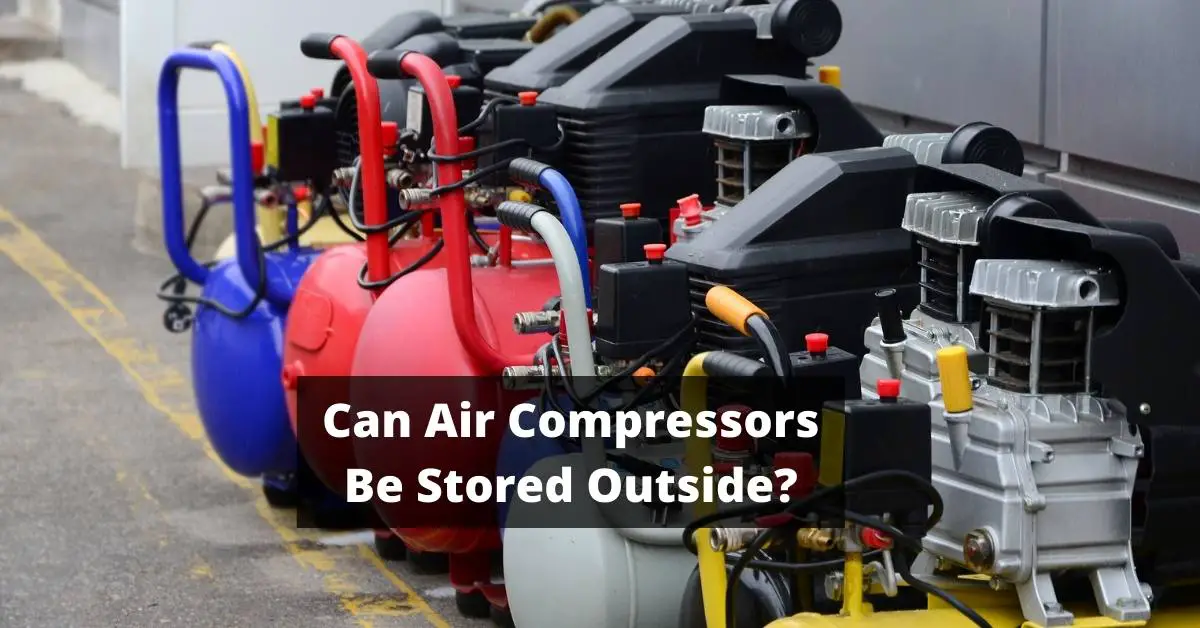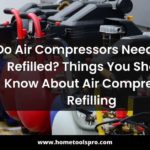Can You Really Weld an Air Compressor Tank?
Air compressor tanks are often made from steel, which is a weldable metal.
Welding an air compressor tank is not as difficult as it may seem.
In fact, with the right tools and techniques, anyone can weld an air compressor tank.
However, there are many things to keep in mind if you’re considering welding an air compressor tank.
Welding an air compressor tank can be a great way to extend the life of your compressor.
But it’s important to know how to properly weld the Tank so that it doesn’t leak and cause other problems down the road.
Keep reading the article, and you’ll be able to collect much information to weld your air compressor tank like a pro.
How Do Air Compressor Tanks Get Damaged?
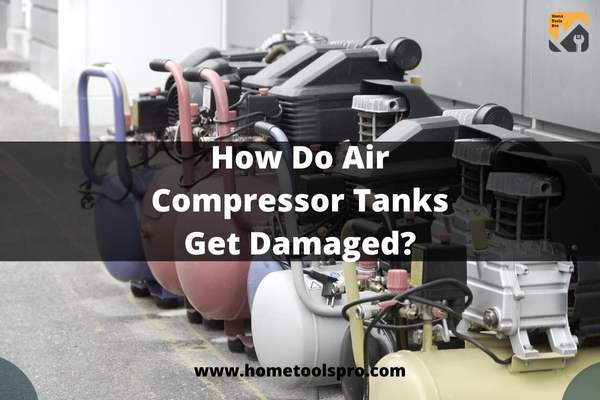
Air compressor tanks can get damaged in several ways. The most common cause of tank damage is corrosion.
This can happen when the Tank is not properly cleaned and maintained or if it is exposed to moisture or chemicals. Corrosion can weaken the Tank and cause it to leak or even burst.
Another way that air compressor tanks can get damaged is by impact. If the Tank is hit hard enough, it can be dented or cracked. This can cause leaks and reduced performance.
Finally, air compressor tanks can also be damaged by overfilling. If too much pressure builds up inside the Tank, it can burst. This can be dangerous and should be avoided at all costs.
If you think that your air compressor tank may be damaged, it is important to have it inspected by a professional. They will be able to tell you if the damage is repairable or if you need to replace the Tank.
Taking care of your air compressor tank will help ensure that it lasts for many years.
What Are The Different Techniques of Welding an Air Compressor Tank?
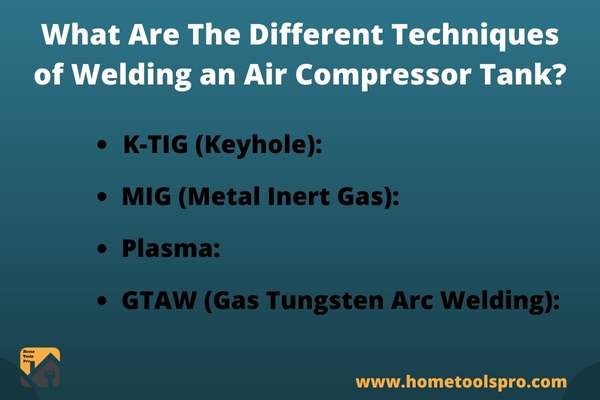
K-TIG (Keyhole):
Keyhole welding is a high-speed, precision welding process that is capable of joining most metals, including aluminium, stainless steel, tool steel, and titanium.
The keyhole technique uses a constricted arc to create a deep and narrow weld pool. This results in a small heat-affected zone and minimal distortion.
MIG (Metal Inert Gas):
MIG welding, also known as gas metal arc welding (GMAW), is a popular welding process that uses an electrode wire fed through a welding gun.
The wire melts and joins the two pieces of metal together. MIG welding is often used for projects that require a clean, strong weld.
Plasma:
Plasma welding is a process that uses an arc of plasma to weld two pieces of metal together.
Plasma welding is similar to TIG welding, but the plasma arc is used to create the weld pool. Plasma welding is often used for projects that require a very clean, strong weld.
GTAW (Gas Tungsten Arc Welding):
GTAW is also known as TIG (inert tungsten gas) welding. An arc welding process uses a non-consumable tungsten electrode to produce the weld.
The weld area is protected from atmospheric contamination by a shielding gas (usually an inert gas such as argon).
What Are The Types of Metal Finishes in Air Compressor Tanks?
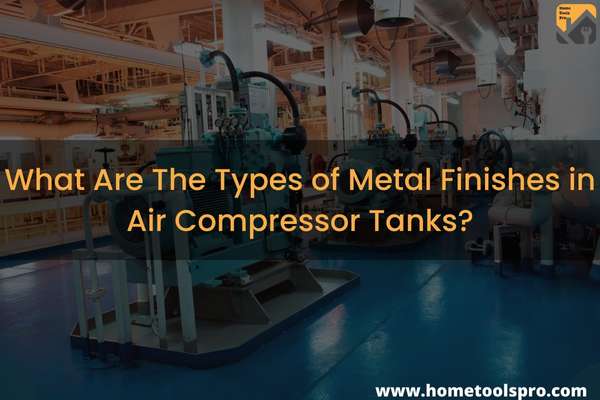
Primed Steel:
This is the most common type of metal finished in air compressor tanks.
It is also the least expensive option.
The primed steel is then coated with a layer of paint to protect it from rust and corrosion.
Powder Coated Steel:
Powder coating is a type of paint that is applied as a powder and then cured under high heat.
This creates a harder, more durable finish than traditional paint.
Powder coated steel is more expensive than primed steel, but it will last longer.
How Safe is Welding an Air Compressor Tank?
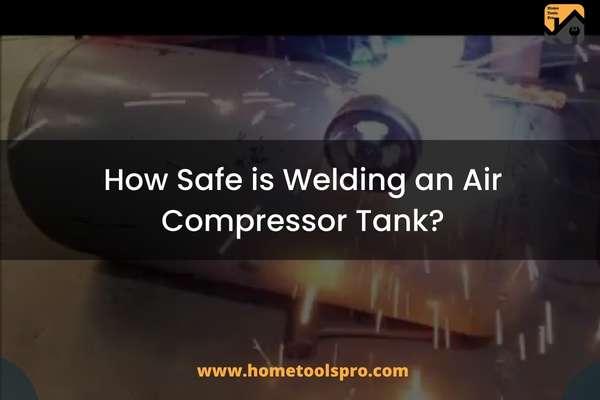
An air compressor tank is a type of metal that is commonly used to store compressed air.
The safety level of welding an air compressor tank varies depending on the type of metal and the thickness of the metal.
If the metal is thin, the risk of explosion is higher. If the metal is thick, the risk of explosion is lower.
Welding an air compressor tank is a potentially dangerous activity that should only be undertaken by experienced professionals.
There are a number of risks associated with welding an air compressor tank, so it’s a job to get it done responsibly.
Visual Explanations: https://www.youtube.com/watch?v=-y8ujgzM94c
What to Consider Before Starting to Weld an Air Compressor Tank?
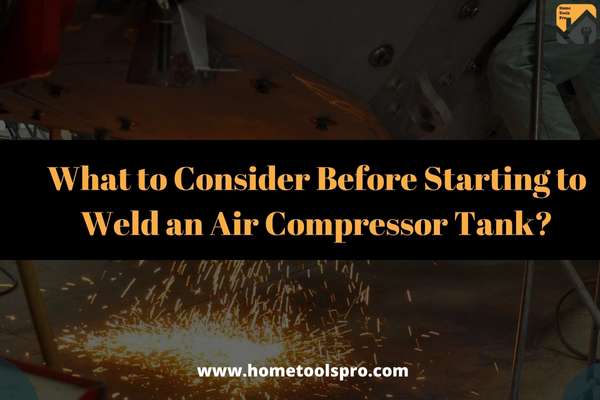
Make sure to Drain the Tank Completely:
Welding on an air compressor tank can be dangerous if the proper precautions are not taken.
One of the most important things to do before starting any welding project is to make sure that the Tank is completely drained of any residual air and moisture.
This will help to prevent explosions and other accidents.
Check For Any Leaked Oil or Fuel in And Around The Tank:
Another important consideration is to check for any leaked oil or fuel in and around the Tank.
Even a small amount of oil or fuel can cause a fire or explosion when welding, so it’s important to be sure that the area is clean and free of any flammable liquids before starting.
– Search for all the Dents and Damages to the Tank:
Once you have confirmed that the Tank is empty and clean, you will need to inspect it for any dents or damage.
Any damage to the Tank can create weak spots that could cause an explosion during welding. If there are any dents or damages, they also should be repaired during the same welding process.
– Assess the Depth and Level of those Damages:
After you have found all the damages, you need to assess how deep or severe they are.
If the damage is only skin deep, then it can be repaired with a simple weld.
However, if the damage is deeper, then you will need to make a patch using a metal plate that is welded over the hole.
How to Weld an Air Compressor Tank?
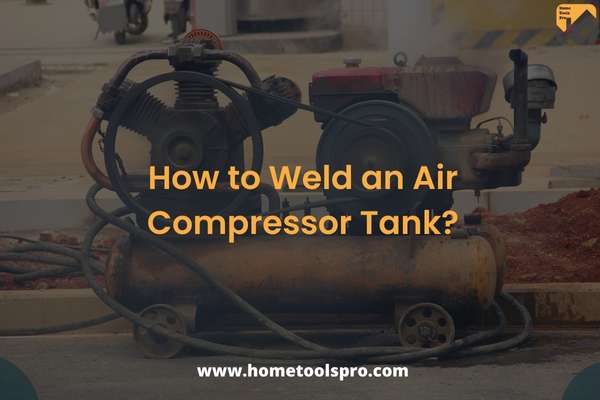
Step 1 – Check Out the Steel Condition & Type of Metal:
The condition of the metal is the prime factor in getting a successful welding job.
You need to ensure that the steel isn’t rusted as well as it should be in a clean state.
If you’re going to weld a new air compressor tank, then you don’t have to perform this step.
Step 2 – Follow the suitable Welding Technique:
There are several different welding techniques that can be used on an air compressor tank.
The type of welding technique that you choose will depend on the size and thickness of the Tank and the materials it’s made from.
Be sure to consult with a professional welder before starting any welding project to ensure that you’re using the right technique.
Step 3 – Wear the Proper Safety Gear:
Last but not least, always be sure to wear the proper safety gear when welding on an air compressor tank.
This includes a welding helmet, gloves, and protective clothing.
Never weld without proper safety gear, as it can lead to serious injuries or even death.
Step 4 – Weld up to the Same Thickness of the Tank Wall:
After prepping the area and putting on your safety gear, you’re ready to start welding.
When welding an air compressor tank, it’s important to weld up to the same thickness as the tank wall. This will help to prevent any leaks or weak spots in the Tank.
Visual Explanations: https://www.youtube.com/watch?v=b6uBywIenRA
Safety Measures:
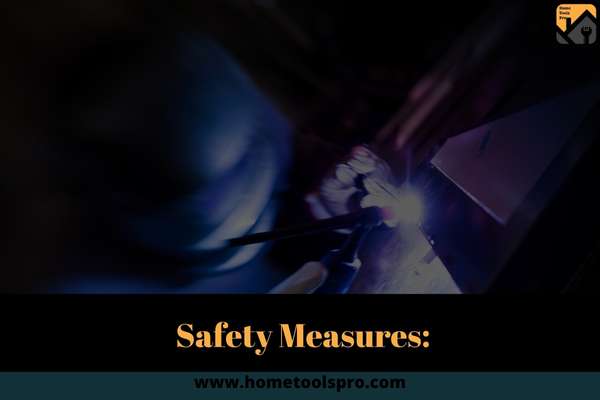
Welding is the process of joining two or more pieces of metal together by using heat and pressure.
The air compressor tank is one type of metal that can be welded.
However, there are different safety measures that should be followed when welding this type of metal.
The first is to make sure that the area where you will be welding is clean and free from any flammable materials.
This includes removing any paint, grease, oil, or other substances that could catch fire.
The second is to wear the proper clothing and equipment. This includes wearing a welding mask, gloves, and protective clothing.
The third is to use the correct welding procedure. This includes setting the power level and gas flow rate correctly.
Finally, the fourth is to have a fire extinguisher handy in case of an accident.
When welding an air compressor tank, following all of these safety levels is important. By doing so, you can prevent accidents and injuries.
Related Matters
Do welded air compressor tanks explode?
Welded air compressor tanks can explode if they are not repaired, designed and manufactured properly.
Improper welding can cause the Tank to weaken and eventually rupture, leading to an explosion.
It’s important to choose a reputable manufacturer when purchasing a welded air compressor tank in order to ensure that you’re getting a quality product that will be safe to use.
Always read the reviews before making a purchase, and contact the manufacturer if you have any questions about the safety of their products.
Can I weld a pinhole in the air compressor tank?
Yes. It’s possible to weld a pinhole in an air compressor tank, but it’s not recommended.
The biggest problem with welding a pinhole in an air compressor tank is that you run the risk of creating a bigger hole and ruining the entire Tank.
Welding is a tricky process, and it’s easy to make mistakes that can cause more damage than you started with.
Is it safe to cut an air compressor tank?
It is not safe to cut an air compressor tank.
Air compressor tanks contain pressurized air, and if the Tank is cut, the pressurized air can escape quickly and cause injury.
If you need to dispose of an old air compressor tank, it is best to take it to a scrap metal recycler.
They will be able to recycle the metal for you and properly dispose of the Tank.
Will JB Weld hold under pressure?
Yes, JB Weld can hold under pressure.
It is a high-strength epoxy that can be used to repair various household items and metal surfaces.
While it is not recommended for structural repairs, it can withstand up to 3,000 PSI of pressure.
When using JB Weld, be sure to follow the instructions carefully and allow ample time for the repair to cure properly.
How do you get rust out of an air compressor tank?
Rust can be removed from an air compressor tank by using a wire brush to scrub it off and then using a rust inhibitor such as naval jelly to coat the Tank.
The best way to prevent rust from forming in the first place is to keep the Tank coated with oil.
